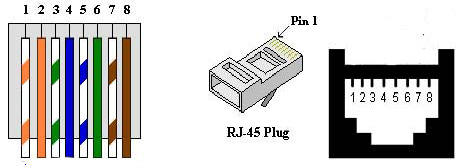

This is achieved by increasing the wire twists, better shielding, drain wire, and increased diameter. The different types of cables (category or cat) offer increasingly faster transmit and receive speeds. Straight through LAN cables are the most common, and the pinout is the same if they are Cat5e, Cat6, or Cat 7. This lesson is from our IT Networks Fundamentals online training course that’s just $79.99 USD. The pinout is always the same for Ethernet cables. It doesn’t matter if you make up some Cat5e, Cat6, and Cat7 cables. The following are the pinouts for the RJ45 connectors so you can check which one you have or make up your own. Most modern communications equipment can auto-sense which type you are using, but some still need the correct cable pinout. Specify the transceiver mode based on the one you want to use.Ethernet LAN cables can come in two types – Crossover or Straight through.To locate the example, open LabVIEW and navigate to the Help tab > Find Examples > Hardware Input and Output > Serial > RS-485 Transceiver Control.vi.If you are using RS-485 (2-wire), test communication with the shipping example RS-485 Transceiver Control.vi. The Respond indicator should display the *IDN?\n command.
#Loopback cable pinout serial#

The Test Panel should successfully read the sent *IDN?\n command.įor both RS-232 and RS-485 (4-wire), test communication with shipping example Simple Serial.vi. The display window will then outline the write and read operations.In the Basic I/O tab, select Query to send the default *IDN?\n command.Once the Test Panel window has opened, select Input/Output.In MAX, select the communications port of interest and select Open VISA Test Panel.
#Loopback cable pinout code#
Make sure not to have VISA Test Panels and LabVIEW simultaneously open, or VISA will throw an access resource error (error code -1073807246 hex:0xbfff0072). Note: You can test communication in MAX VISA Test Panels or LabVIEW examples.

On an RS-422/485 port, connect the TXD+ signal to RXD+ signal, and the TXD- signal to the RXD- signal. *It is not recommended to use the RJ-50 connector by itself to perform a loopback test due to the small separation between pins. If you use a RJ-50 to DB-9 serial cable (Part Number 182845-XX), a loopback test can be performed using the pins for a DB-9 connector. On an RS-232 port, connect the transmit (TXD) signal to the receive (RXD) signal. For more details on NI serial hardware pinouts, refer to the Serial Quick Reference Guide. Note: The pin diagrams provided for this tutorial are for the female connector. RS-422/485) and the type of serial connector you have. Identify what serial communication protocol you are using (RS-232 vs. Refer to the sections below to properly connect your hardware.


 0 kommentar(er)
0 kommentar(er)
